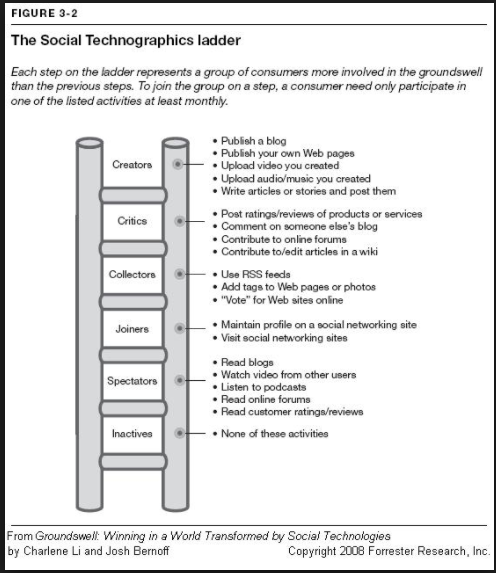 We have a pretty active and vocal community here at Spin Sucks.
We have a pretty active and vocal community here at Spin Sucks.
Sure, people writing comments has declined pretty drastically in the past few years, but they have for everyone, not just us.
The comments haven’t gone away entirely. We still get quite a few here—and we’ve seen conversations take place elsewhere.
People still want to have those conversations, but they’re not as willing to put themselves out there publicly as they once were.
There is gigantic shift to “dark” social media, which includes Facebook groups and Slack (we have moved much of our community there—you should join!).
People now prefer to have conversations privately, even though they’re the same we once had publicly.
They want to know the community has been carefully selected and vetted. The people they are in the group(s) with are like-minded. They can have intelligent conversations without being ridiculed or inflamed.
And yet, only a small percentage actually comment.
Climbing the Social Technographics Ladder
In looking at our Slack analytics with my team last week, it was pretty interesting to note that only 12 percent of our members are writing comments, posting, or engaging.
(It’s significantly higher in the PR Dream Team at 66 percent, but I believe that’s because it’s a paid group so people have more skin in the game. Another topic for another time.)
It makes sense only 12 percent of our audience participates in conversation. It’s fits exactly the model introduced in Groundswell 10 years ago.
Only a small percentage of us are creators and critics.
Everyone else are collectors, joiners, spectators, or inactive.
I would venture to guess much of our free community guests are spectators and joiners.
But what if you want to climb up the social technographics ladder to become a critic—and then a creator.
Writing Comments is Scary
It’s not an easy thing to do. It’s scary to put yourself out there, especially in today’s highly emotional political world.
I believe there are three reasons writing comments is so scary:
- I’m too busy. It takes time to comment. Maybe you’re reading it on your phone which is even more difficult and time consuming. I like to read, learn, and click on. Plus, it was lots easier to comment back in the day. The Great Recession was here and we were all looking for things to fill our days. Commenting on blogs was an easy one, but no one has that kind of time anymore.
- I feel stupid. Seriously, sometimes I look at the comments section and it’s a clique of people who are busy whipping each other up into this intellectual frenzy. I am way too intimidated to pop in and say, “Hey y’all, really? WOW, this is great, thank you!!
- No value to add. This goes along with the “I feel stupid” point. Maybe you feel like you just don’t have anything of real value to add.
Or, perhaps you might even be saving yourself for the exact, right moment to comment or join a conversation.
But what does that moment look like? And how do you make that big first step?
As Nike says, “Just do it.”
You do have something to add beyond, “Great article!” Maybe one particular sentence popped out at you, or you found a tip that will make your life easier.
That is the basis of your comment—not how it made you feel after you finished reading it.
I do understand if you’re too busy. Like you, I read plenty of content every day and don’t spend my day writing comments.
But I also believe, like a NPR listener, if you read something regularly, you should take the time now and again to jump in and “pledge.”
Let the author know you are out there; sign the guest book so to speak.
Guide to Jumping Boldly into the Conversation
So how do you do it? And how can it become less scary?
There are five ways for you to begin writing comments:
- Introduction comment: I’ve been reading your blog for a long time (X months), this is my first time commenting, and this made an impression on me because… Or, I’ve been in this community since February and this is the first time I’ve commented because I could really use some help with XX.
- Where have you been all my life comment: Wow, this is my first time reading your blog, how have I not known about this? Thanks for the great info here, this in particular had an effect and here is why. Or…wow, I just joined this community on the recommendation of XX and I’m impressed with the conversation you had about XX. My thoughts on that are XYZ.
- Ask a question: Still have a question? Absolutely do not be afraid to ask. This is why dark social media is so much easier to handle. You can ask a question you may feel silly asking, but no one is going to see it publicly. I’m always amazed at the level of help people provide. Just last week in the PR Dream Team, there was a huge, threaded conversation on Facebook ads. While the original poster said she had about “300 questions,” I’m willing to bet she got half of them answered.
- Life/work application: Share the idea that hit you as you read the article or the conversation. Copy and paste the statement that made you think of it and say something along the lines of, “I love this because XX.” Tell us how you are going to use this information to solve your problems, so others can benefit from that. This is part of what makes the comments section a beautiful place.
- Share your reaction: Agree, disagree, learned something new, have something to add. Share a bit about yourself and why you had that reaction. But be respectful. The reason this particular community works is no one is disrespectful. We once had a man go after someone in our community late on a Saturday night. It was pretty clear he’d been drinking, but we removed him immediately. The next morning, I told him why. He was mortified. But he clearly could not be trusted with a laptop, access to a community, and beer.
Writing Comments Will Help Mine for Content
It does take time to comment—and there tends to be a lot of back and forth when you do.
It’s not all about feeding the author’s ego (though it does do a bit of that). It’s more about figuring out what resonates—and what does not.
For all the talk about brand personas and needing to figure out what our customers and prospects want, you have a really easy way to do that.
Participate in online conversations. Ask questions. Get feedback. Create conversation.
Then, the next time your client or leader wants to know what your customers think, you’ll have an answer.
